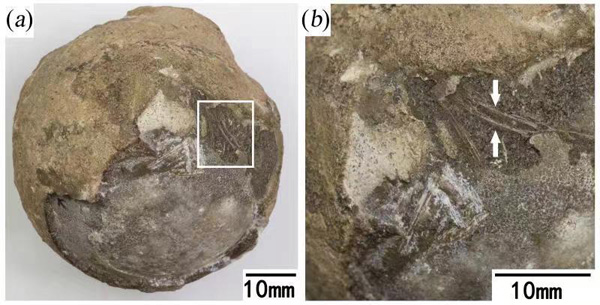
Artist's conception of a baby turtle from the Cretaceous period about to break its shell [Photo by Masato Hattori/For chinadaily.com.cn]
A turtle embryo fossil dating to the Cretaceous period is believed to have been laid by Yuchelys nanyangensis, an extinct giant turtle. It was the first time paleontologists had identified the species of a tortoise based on a fossilized embryo.
The fossil was found during a field investigation in Henan province by two professors from the China University of Geosciences (Wuhan) in 2018. They found what they suspected were skeletal structures at damaged parts of the shell. CT scan and 3D image restoration showed it was a tortoise embryo, the second of its kind found in China.

Turtle embryo fossil [Photo provided to chinadaily.com.cn]
Han Fenglu, one of the two professors, said that because the inner parts of the fossil were delicate and not closely linked, it took about a year for the research team to restore the skeletal form.
"Though it was very hard, we were excited to figure out what species it was," he said. "The day we restored the jaw I believed it was a tortoise embryo."
The study also found that the shell, at 2 millimeters thick, was thicker than that of any known turtle. Researchers compared the size and weight of adult turtles and their eggs and concluded the adult turtle should be longer than 1.6 meters. After analyzing its shape, skeletal characteristics and origin, they concluded it was Yuchelys nanyangensis.
They also thought the thick shell was an adaptation to an extreme environment, but factors of influence remain under study. The findings were published online in the journal Proceedings of the Royal Society B-Biological Sciences.